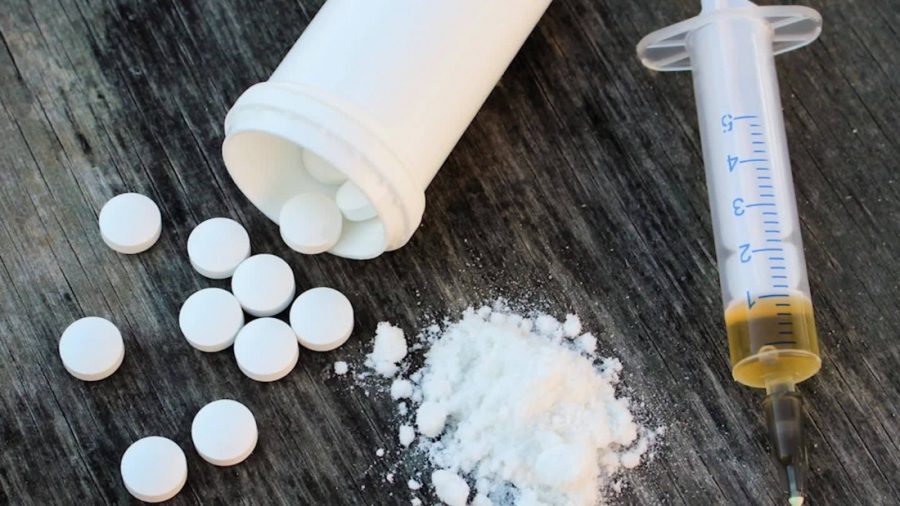OPINION : The Hidden Killer Inside American Hospitals
March 28, 2018
When people exit hospitals they expect the threat to their health to be over. However, for many that is not the case because of a common danger that lies in the very medication that numbs residual pain from surgeries.
Fentanyl, a powerful synthetic opioid, is classified legally as a schedule-two prescription, meaning that it’s used to treat patients with severe post-surgery pain and patients with chronic pain. Fentanyl is found in common prescription drugs like Actiq, Duragesic, and Sublimaze. Some patients leave hospitals with over 30 prescriptions for drugs such as these, which lead many anesthesiologists to state, “Despite the risk of dependence, many surgery patients receive prescriptions for a month’s supply or more of opioid pills. And about 6 percent are still using them three months or longer after their surgery, according to a study published last year in JAMA Surgery.” Considering this it’s no wonder that as many as 2.1 million Americans suffer from opioid addiction. But why are synthetic opioids so addictive?
To understand this, we have to examine the differences between synthetic opioids and regular opiates. Opiates are drugs naturally derived from the opium poppy plant, such as heroin, morphine, and codeine. The term opioid refers to “any substance, natural or synthetic, that binds to the brain’s opioid receptors – the parts of the brain responsible for controlling pain, reward and addictive behaviors.” Many times, opioids are stronger than opiates, fentanyl being 50 to 100 times more potent than morphine. According to the National Institute on Drug Abuse, “The high potency of fentanyl greatly increases risk of overdose, especially if a person who uses drugs is unaware that a powder or pill contains fentanyl.” This comes even more into play seeing that Fentanyl sold on the street can be mixed with cocaine or heroin, which amplifies its potency even more and thus also increases the chance of complication during its use. “While dealers try to include fentanyl to improve potency, their measuring equipment usually isn’t fine-tuned enough to ensure they stay below the levels that could cause users to overdose. Plus, the fentanyl sold on the street is almost always made in a clandestine lab; it is less pure than the pharmaceutical version and thus its effect on the body can be more unpredictable.”
Fentanyl is also becoming a more widely used drug because of its affordability and accessibility for drug dealers. “From the dealer’s perspective, heroin is still hard to make,” Nelson (Forbes) said. “You have to grow it, extract it, convert it, transport into the country. Fentanyl is so much easier. And because it’s 50 times more potent than heroin, the volumes are much easier to transport–you can put it in a car instead of truck, or a plane instead of a boat.” In a way, people are putting a lot of trust into their dealer, because there is no room for error when dealing with this drug. A lethal dose of heroin is about 30 milligrams, for fentanyl only .25. For reference, a typical baby aspirin tablet is 81 mg. If you cut that tablet into 324 pieces, one of those pieces would be equal to a quarter-milligram.
The drug is also vastly more dangerous because when an overdose does occur, it can cause breathing to stop completely, and the antidote, naloxone, may not even work in one dose because of its potency. Additionally, many users don’t even recognize the symptoms of overdose (pinpoint pupils,weak muscles, dizziness, confusion, extreme sleepiness, loss of consciousness, profoundly slowed heartbeat, and very low blood pressure) and don’t seek aid.
The epidemic has exploded in recent years, with deaths up 540% in the past three years. Therefore it’s no wonder that the government would intervene to try to stop this opioid problem, and President Trump attempted to do so. He first addressed the problem in October 2017, declaring it a national emergency. However, little action has been taken since then.
“He promised to roll out a ‘really tough, really big, really great’ advertising campaign to spread awareness about addiction, but that has yet to take shape. And key public health and drug posts in the administration remain vacant, so it’s not clear who has the authority to get new programs moving,” Politico said.
Recently, his “plan” has taken a turn for the worse, and seems to take inspiration from Philippine President Rodrigo Duterte. Duterte’s way to combat drugs was to create Death Squads, who wage war on drug dealers and drug users alike. He was quoted in saying, “These sons of wh*res (drug dealers) are destroying our children. I warn you, don’t go into that, even if you’re a policeman, because I will really kill you. If you know of any addicts, go ahead and kill them yourself, as getting their parents to do it would be too painful.” Since the advent of these death squads nine months ago, more than 7,000 people have died.
Trump is going to propose to his justice department that the death penalty be extended legally to include traffickers of fentanyl and other drugs. While this is not nearly on the same scale of Duterte, this is a pretty big leap for President Trump. First, he went from advocating for harsh advertising campaigns similar to the “Just say No” campaign in the 80’s, and now he suddenly jumped to, “Unless you have really, really powerful penalties, led by the death penalty for the really bad pushers and abusers, we are going to get nowhere,” quoted by NPR.
Compared to how other nations have responded to Opioid Crisis of their own, this statement by our American president is revealed as being pretty weak.
For example, in Canada, a country facing a national emergency similar to the United States, the government is taking comprehensive action all while being completely transparent with the public.
The Canadian governments website provides this outline to address the epidemic:
- Prevention
- Better inform Canadians about risks of using opioids
- Support better prescribing practices
- Reduce easy access to unnecessary opioids
- Treatment
- Facilitate access to treatments for pain and opioid use disorders
- Promote collaboration and knowledge sharing on innovative approaches to treatment and rehabilitation
- Harm reduction
- communicating results from laboratory testing
- facilitating access to naloxone
- reviewing supervised consumption site applications
- Enforcement
- Use legislative and regulatory authorities to address the illegal drug supply
For more information about the progress of each of these steps visit https://www.canada.ca/en/health-canada/services/substance-abuse/prescription-drug-abuse/opioids/federal-actions.html
Before proposing a plan as radical as extending the death penalty, the United States government should actually try having a legitimate plan of attack. Rushing into this blindly could hurt more people than it could help especially if the terms of this extension are not properly thought through.



